The NHS is under pressure with hospital beds being in short supply, and several UK venues are being turned into makeshift hospitals as a solution, as well as restaurants and cafés moving to operate as takeaways, but what are the insurance implications?
With the coronavirus UK death toll rising daily and lockdown measures being enforced, many vacant properties are being re-purposed.
NHS England announced plans to convert several venues into makeshift hospitals under new government contracts.
There are seven proposed premises to be converted into NHS Nightingale hospitals – one being the Manchester Central Centre which Biba uses annually for its conference as well as the Excel Centre in East London.
Meanwhile, hotels could also be re-purposed as hospitals, along with restaurants and cafés being turned into takeaways.
MGA Aqueous Underwriting waived its policy conditions for unoccupied properties, meaning that these businesses will be covered for claims such as water damage, theft and escape of water (EoW).
However, the re-purposing of these properties is putting brokers under increasing pressure as they battle with the complexities in underwriting the risk as the liability still needs insuring.
Change of use
Gisele Norris at Aon told Insurance Times that converting a hotel into a healthcare operation in a lease situation would involve a material change in risk.
Material change in risk is an endorsement or policy condition that appears on most environmental policies, but many hotels do not purchase this type of cover.
She said that getting good advice from brokers and lawyers around the terms of the government contract and the facility is important.
“Everything will go back to the contract which is usually agreed upon by the government and a facility.”
Aon’s report ‘Hotel Industry Perspectives for Covid-19’ highlights that some policies have clauses that require notice to an insurer of a change in use or occupancy, or barring coverage for claims due to increased risk.
“If the risk is moving from hotel to healthcare facility, the carrier would likely deem the change in risk material and need to accept the change in risk formally by endorsement,” the report said.
For a hotel upgrading to a hospital, Norris recommends putting as much of the healthcare-related liability on to the government or other entity to ensure risk is not out of the business’s control.
It is therefore important to inform underwriters of the material change on risk because if claims arise the policyholder could be caught unaware, she said.
Using a facility in a different way could also change the total insured value of the property, for example using expensive healthcare equipment.
For this she said that identifying what exposures are to change with the new exposure and who is going to be responsible for that is vital in determining whether the liability is suitably covered.
Considerations
Even how the location is managed could have implications which would differ from policy to policy. For brokers and insurers, the overarching challenge Norris identified is understanding all the different types of policies and contracts, “it’s a big volume of work, understanding how these parties are acting together in different situations”, Norris said.
Aon’s report also said that workers’ compensation claims would not be expected if the hotel is just leasing the property to the government and not providing any employees, but there may still be employee functions if an aid organisation takes over.
It stated: “As a result, if the hotel were to provide employees on a leased basis, there could potentially be workers’ compensation exposure there. The insured would want to understand how the hotel’s employees may be involved in order to further assess the risk.
“From a liability perspective, if the leasing of the hotel requires the owner to maintain the property, there could be liability exposure.”
What should brokers and clients consider?
According to Aon’s report, they should consider if there are any affirmative grants of coverage for disinfection costs for viruses. As well as if the policy definitions of “pollutant”, “pollution conditions”, “environmental damage” or other term of art (environmental policy wordings vary from carrier to carrier; wording is not standard in the industry) contains or broadly defines “virus”.
Is the policy silent? Is there a communicable disease exclusion?
How is the policy triggered? For example environmental policies are usually “claims made” and the definition of “pollutant”, “pollution conditions”, “environmental damage” or other term of art usually say something like this: “…means the discharge, dispersal, release, escape, migration, or seepage of any solid, liquid, gaseous or thermal irritant, contaminant, or pollutant… medical, red bag, infectious or pathological wastes, on, in, into, or upon land and structures thereupon, the atmosphere, surface water, or groundwater.”
Will the fact pattern of a potential claim meet this requirement? If a carrier is willing to make an affirmative coverage grant for “virus” then specific wording for that carrier will need to be negotiated by the broker.
What other policy provisions does Aon think should be carefully scrutinised?
Structure of the named insured and additional insured (environmental policies do not necessarily have omnibus named insured wording).
Other insurance provisions should be evaluated in conjunction with other property and casualty policies that potentially provide 1st & 3rd party coverage for environmental risk.
Other insurance provisions on an environmental policy can be modified so that the environmental policy is deemed primary or specifically excess over particular policies. For example, consider making it excess over a property policy that offers limited/sub-limited disinfection cover or debris removal cover or making it excess over a casualty policy providing sudden and accidental cover.
Alteration of risk
Law firm Keogh’s Richard Houseago, head of the property risks and coverage team told Insurance Times that the likely first insurance hurdle would be “alteration of risk”.
He said: ”Most commercial policies will require any such alteration to be notified to the insurers to allow for any necessary renegotiation of the cover.
The debating point is usually how much of a change of use is needed actually to constitute a notifiable alteration of risk.
Usually something fairly fundamental is required and there might be a view that there is not that much difference between accommodating guests and those in precautionary quarantine.
That view would become rather strained as soon as any kind of treatment of patients becomes involved. It would be a very bold hotel owner indeed who did not discuss any such change of use in advance with his insurers to ensure seamless protection for the business and against potential increased liabilities.
An additional negotiated premium, if applicable, must be infinitely preferable to risking some retrospective reappraisal of the position after the event and with an uncertain outcome.”
He highlighted the use of hotels and student accommodation being used as temporary quarantine facilities for travellers returning to the UK early on in the Covid-19 crisis.
Meanwhile Michael Hogg, partner in law firm Kennedys told Insurance Times that the policy will describe the business or use to which the the property can be put and if that does not include “new service” being offered then the underwriter may well say there is an alteration to the risk meaning the insurer is entitled to refuse any subsequent claim.
”That will probably be by operation of a policy term, but there is also a more fundamental issue in that the risk has changed from that which was underwritten, so there is no cover.
”The issue is even more stark when a conference centre becomes a hospital in short order – having oxygen and a substantial quantity of medicines on site is quite a change of risk for the events and hospitality industry, and underwriters will need to be notified of that change of use.
”It will not just be the property risk that this affects, but any third party policies where the change in use of, say, property visited by the public changes the risk that insurers underwrite,” Hogg said.
He urged that care should be taken if renewals fall within the lockdown period.
”A business that once obtained 25% of its income through takeaways (the rest being ‘sit down’ trade) must disclose that their business is 100% takeaway for the foreseeable future.
”If the insured does not disclose their change in business focus then they may find their policy avoided or the claim payment reduced later if the worst happens,” he added.
Reputational damage
Ashwin Mistry, chairman at Brokerbility told Insurance Times that re-purposing buildings was another issue it raised and that insurers have adapted again with restaurants and cafés being converted to takeaways, manufacturers changing from clothing to NHS PPE suppliers and care home taking on NHS capacity.
”Insurer partners are asking for dialogue between broker and underwriter most are being flexible within guidelines but referral points are available,” he said.
”Hotels converting to hospitals [and] conference centres into makeshift centres are a fundamental change in risk.
”These have to be underwritten and brokers have to adapt to changing client profile. Insurers will want as much information as possible and to my knowledge, insurers are being as accommodating as possible as part of their contribution to end client and national crisis.
”Brokers have to be proactive with their clients and be there ’side by side’.
”We have created our own Library of Insurer changes and that is being well received by our member brokers
”Finally, both insurers and brokers are finely tuned into the reputational damage that may come and almost all are being creative and communicating very well with end policyholders,” Mistry said.
A new lens
Norris added: “Pandemics are a biological certainty – they will happen. One thing that is unusual is that this is caused by a coronavirus and not an influenza. Flu pandemics happen three times a century in various degrees.
“I think this is a wake-up call, hopefully it will give us a framework for future planning and how we might expand and contract the supply of available healthcare. I think we will have a lot to learn from it. There’s the potential for a lot of change here as well as the economic fallout.
“I think people will begin to value the way they spend their insurance dollars [pounds] differently.”
She gave the example of non-business damage interruption cover being available on the market prior to the pandemic – a policy that did not garner that much interest as it was expensive and seen as not useful.
In Aon’s annual global risk survey, risk managers ranked pandemics at number 60 out of 100.
“I think that kind of a product, people will be much more interested in non-damage business interruption and they will value it differently. Generally speaking, I think that people will be thinking about risk with a new lens,” Norris added.
Read more…Playing the Covid-19 blame game
Not subscribed? Become a subscriber and access our premium content
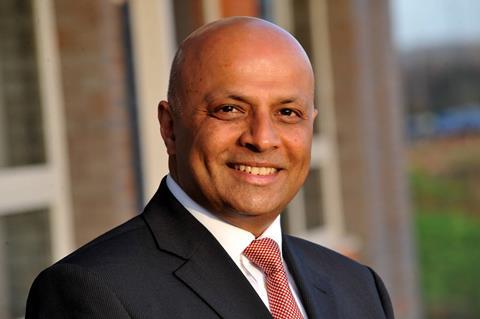
“Everything will go back to the contract which is usually agreed upon by the government and a facility.”
She says that getting good advice from brokers and lawyers around the terms of the government contract and the facility is vital.
For a hotel upgrading as a hospital, Norris recommends putting as much of the healthcare related liability on to the government or other entity to ensure risk is not out of the business’s control.
to inform underwriters of the material change of risk because if any claims arise the policyholder could be caught unaware, she says.
could also change the total insured value of the property, for example new and expensive healthcare equipment may be .
For this she said what going to change and who is going to be responsible for that is vital in determining whether the liability is suitably covered.



























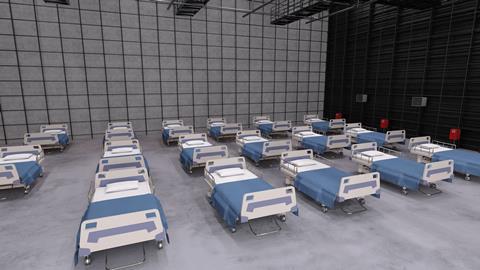


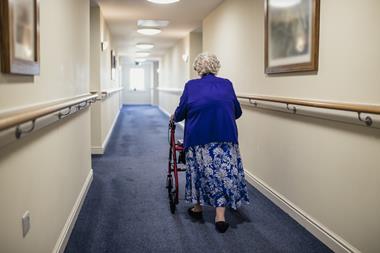
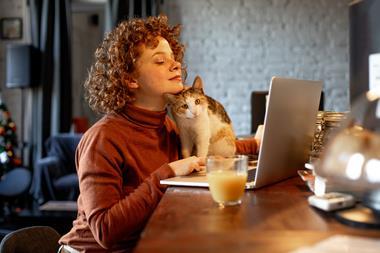


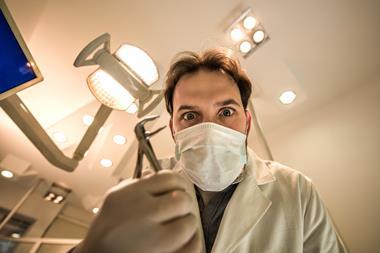










No comments yet